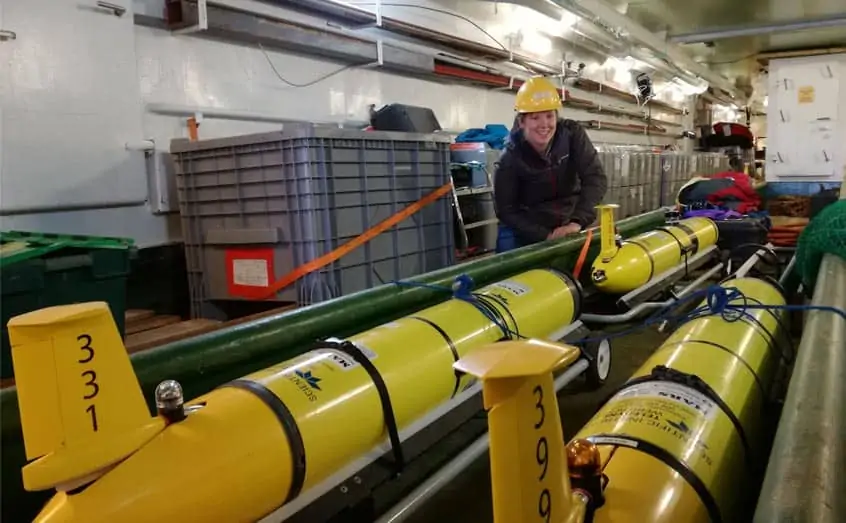Teledyne Marine‘s Slocum G3 autonomous underwater glider has been used to measured previously hidden patches of water between the Arctic and Atlantic oceans that could provide new understanding of how the ocean’s food web forms. The eddies, or circular movements of water that have broken off from an ocean current, are created in the northern part of the Barents Sea, as cooler and fresher water from the Arctic moves south and becomes trapped within the warmer and saltier water from the Atlantic.
Although they measure approximately 30 kilometres across, these eddies cannot be picked up by satellites, and had been previously unnoticed until a two-week trial of the “Zephyr” autonomous glider by oceanographers from the Scottish Association for Marine Science (SAMS). The trial was being conducted as preparation for a longer mission as part of the Arctic PRIZE project, funded by the Natural Environment Research Council’s Changing Arctic Ocean programme.
The autonomous glider collects temperature and salinity data every kilometre at depths of up to 200 metres, allowing the team to measure one of these eddies in detail. Although the eddy’s surface temperature was similar to the surrounding water, thus making it invisible to satellites, its lower salinity made it stand out in the glider readings.
Dr Marie Porter, a SAMS oceanographer and lead author on a report about the discovery, published in Geophysical Research Letters, said her findings had implications for understanding the distribution of nutrients that fuel the entire Arctic ecosystem.
She commented: “We get a pretty good idea about what’s happening on the very surface of our ocean through satellites but eddies like this one have been hidden from view because they have warmed at the surface since leaving the Arctic. This temperature masking means we have previously underestimated how much water moves within these patches in the Arctic Seas. It begs the question: how many more of these hidden eddies are occurring in the ocean today?”
The water column of the Barents Sea has a seemingly simple structure where water from the Atlantic dominates in the south but in the north it is overlain by fresher, less dense water from the Arctic. This Arctic water is largely devoid of the nutrients required to fuel the growth of phytoplankton, which is key to maintaining life in the ocean. In contrast the Atlantic Water is one of the key pathways of nutrient rich water into the Arctic.
Dr Porter added: “How these eddies affect this exchange is something we need to investigate if we are to truly understand the ocean ecosystem there.”
Prof Finlo Cottier of SAMS, an Arctic oceanographer and a co-author on the paper, stated: “SAMS has been working with ocean gliders for over a decade and we know that they are the ideal tool for measuring the detailed properties of the ocean. This work gives us precise measurements of important structures in the Arctic that we couldn’t previously obtain.”
Based on an original article published by the Scottish Association for Marine Science (SAMS)











